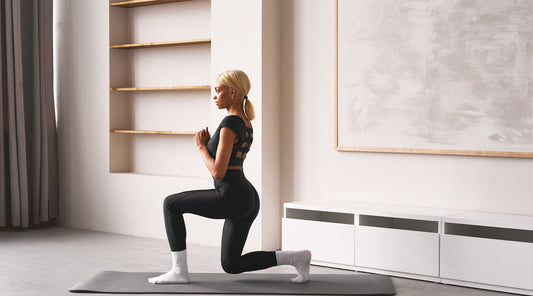Poor posture is thought to be a source of migraine triggers. Studies show that 74% of patients with chronic headaches also report severe neck pain, describing it as stiff, aching, and weak. As a result, research on the connection between bad posture and headaches started.
Poor posture, such as forward head extension, is hypothesized to lead to tension build-up in the upper back, shoulders, and neck, which can result in migraines and headaches.
The poor posture headache symptoms, which are familiar to us, include stiffness or squeezing at the back of the head and neck, dullness, tightness, and pressure in the forehead area.
They are all too frequent in adults and are, thankfully, preventable. They are referred to as "stress headaches." One effective strategy for reducing the frequency or intensity of these episodes may be to adjust one's posture. The brilliant modern solution to this widespread issue is wearing bras for posture improvement.
What are Chronic Headaches?
Severe headaches are not the only sign of a chronic migraine. Until the migraine subsides, it may be difficult or impossible to do anything but find a quiet, dark place to be. Migraine treatment aims to lessen migraine frequency and intensity, making the disease easier to manage and less annoying.
Frequent or prolonged episodes of headaches and migraines are indicative of a chronic migraine disorder. Your symptoms may vary daily (or even hour to hour) if you have persistent migraines. Because of this, it may be difficult to distinguish between one migraine and another.
How Poor Posture Contributes to Headaches?
Bad posture causes headaches in several ways, such as:
- Muscular imbalances, tension, and stress can be caused by postural problems like as kyphosis, forward head position, and tech neck.
- Strained or pinched nerves.
- Compressed blood vessels.
- Incorrect breathing techniques.
- Arthritics.
- More severe temporomandibular joint (TMJ) conditions.
According to the American Migraine Foundation, 14% of individuals report having tension-type poor posture headaches every week. It seems logical that various professional postures, such as staring down at mobile phones, sitting at desks, or driving for extended periods, contribute to tension headaches.
The Mechanism Behind Posture-Related Headaches
Frequent headaches from bad posture experiences may be linked to a build-up of tension in the neck muscles, which may result in issues including reduced mobility. On the other hand, any underlying muscular dysfunction of the cervical joint might trigger a migraine attack.
In contrast, women with migraines did not exhibit a greater forward head extension than women without a history of headaches, according to another study examining the relationship between forward head position and migraine onset.
Due to its paradoxical nature, further research might be necessary to demonstrate the connection between poor posture and headaches properly. It is also important to remember that most of the subjects studied were women. Consequently, there may be limited generalizability to male migraineurs.

Signs and Symptoms of Poor Posture
Let us examine several indicators to determine if your posture is off.
- Rounded shoulders: because they show the shoulders bent forward and the upper back curved, rounded shoulders are a sign of poor posture. This position may cause pain and discomfort because it places an undue strain on the neck, shoulders, and upper back muscles.
- Forward head posture: the head is positioned in front of the shoulders rather than in a balanced position squarely over them, which is why forward head posture is a sign of bad posture. This position may strain the neck's muscles and joints, which can cause stiffness, headaches, and neck pain.
- Muscle fatigue: can poor posture cause headaches? As a result of overstressing the muscles, incorrect posture can eventually lead to tension and weariness. However, weaker muscles cannot sustain the body's weight and preserve correct alignment, which is another way muscle exhaustion can lead to poor posture.
- Back and neck pain: bad posture can lead to greater stress on the muscles, joints, and spine bones, which can cause back and neck pain. Slouching or hunching over oneself can cause discomfort in the back and neck muscles and upset the natural alignment of the spine. This may result in discomfort, stiffness, and soreness.
On the way to proper posture correction, there is a reliable thing that can also boost overall well-being, and this is Etalon, a specially designed-bra for women.
Tips for Improving Posture to Reduce Headaches
Tip 1. Correct clues. If you are as tall as you can be, your shoulders should sit easily in the right posture; you will not need to hold them back firmly. Both sitting and standing fall under this.
Tip 2. Workstation. In the past, we used to position the computer's top at eye level since most users had to look between the monitor and the keys. You will, however, inevitably become smaller to match the computer's size. Thus, position the monitor's center at eye level to "be tall." After that, master touch typing.
Tip 2. Sitting position. Even with the lumbar support set as high as possible, sitting back in the chair will cause your pelvis to slide in and under. Your chin will protrude, and your shoulders will move forward due to your spine losing its "tall" posture. Nonetheless, your knees will be lower than your hips if you sit on the chair's edge with your feet beneath you. You will find it simpler to slightly tilt your pelvis forward.
Conclusion
You have to retrain your body to acquire proper posture as a habit, which takes time and deliberate effort. While working at a computer or driving for long periods, most people notice that they get headaches from poor posture.
Exercises like the chin tuck and scapular retraction should be performed during pauses from these demanding tasks. To assist in reducing overall stress levels, incorporate some relaxing practices.
Poor posture impacts neck, jaw, and shoulder pain, as well as headaches. Therefore, focusing on posture correction can not only help avoid future injuries and discomfort but also lessen current suffering.
Photo by MART PRODUCTION on Pexels
FAQs
Can forward head posture cause headaches?
What is the best posture to prevent headaches?
Does bad posture cause headaches?
Can improving posture alone effectively reduce or eliminate chronic headaches?
How does poor posture contribute to the development of chronic headaches over time?
Trending
Try Etalon posture improvement products










